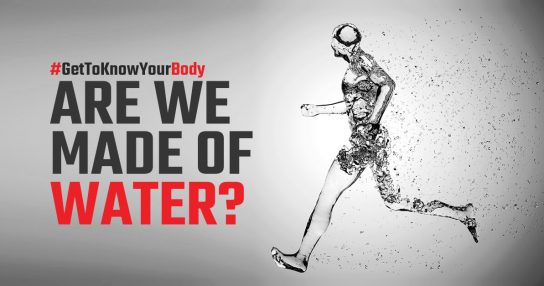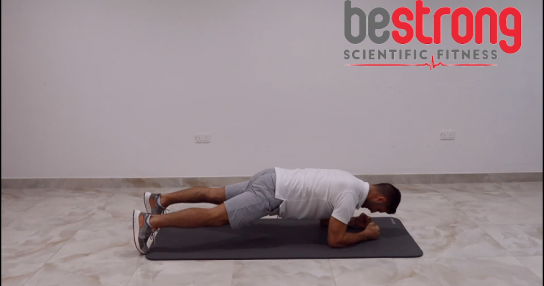How often have you heard this: Do this training program, and you will lose weight easily, or Do this exercise, it will help you to have a six-pack.
Well, things are not so simple. First of all, people’s ability to convince other people is a powerful skill to know but is it applicable to everything in life? I don’t think so, especially if we are talking about health. Second, the fitness industry is full of different directions with a claim that physical activity, in its best way, is developing human health (physical, mental, spiritual, etc.). The problem is that every fitness professional will claim that their way is the best, no matter what. That is completely fine, but only if it is based on science, theory, and practice. Third and last, there is a lot of social media pressure because the human body should look like a sculpture or sort of perfection. In real life – people have jobs, families, emotions, problems, and different daily challenges. If the fitness industry doesn’t understand that, we will lose much more than a client in personal training, a gym member, or an attendee in the group class. We will lose their trust.
We will mention a few facts, tricks, and myths in fitness or physical activity in attendance to bust myths.
FACTS
We are burning fat through breathing. The real answer is a simple chemistry equation. In simpler terms, fat + inhaled oxygen → carbon-dioxide + water. For our purposes, there’s no reason to make the fat-burning process more complicated than that.
Bottom line: We mostly breathe the fat away! 84% of fat is exhaled as carbon dioxide. The other 16% of fat is excreted as water via bodily fluids like urine, sweat, tears, etc.
For example, say someone lost 10 kilograms of fat over some time. Nearly 8.4 kilograms of those were exhaled away as carbon dioxide. The remaining 1.6 kilograms left their body as water through sweat, urine, feces, etc.
But simply breathing more does not guarantee more significant fat loss. The key is putting yourself in a consistent caloric deficit. Otherwise, your body has little incentive to burn fat. Ultimately, your diet is going to be the most crucial factor in achieving a caloric deficit. Food makes up 100% of the calories that go into your body. Exercise accounts only for about 10-25% of the calories that leave it. So while doing exercise that elevates your heart rate and has you breathing hard is undoubtedly helpful, but it’s not the golden ticket to weight loss. This is why you should be wary of any one workout, food, or supplement that guarantees fat burning yet doesn’t account for the other aspects of your lifestyle. It is simple science and mathematics.
Want to lose weight? Sleep. Eat. Move. Breathe. Repeat.
Everyone has a six-pack. Don’t you believe it? Well, anatomy is telling us differently. Every person, by their nature, had a six-pack. The big difference is the percentage of body fat, water retention, and functionality based on physical activity or inactivity. What we see in a six-pack is something that we all have. There are three tendinous intersections in the rectus abdominis muscle. One of these horizontal intersections is present at the umbilicus level, another at the xiphoid process level, and the third midway. These fibrous bands divide the muscle into segments, resulting in a gridiron six-pack shape. The formula is quite simple.
Want to have a six-pack? Sleep. Eat. Move. Breathe. Repeat.
More muscles burn more fat. That is right. Muscles grow through protein synthesis, which is one of the most energy-consuming processes in the cell. If you’re building muscles, it is not just the workout itself but also the growth of muscles that consumes energy and burns calories. Additionally, muscle tissue is metabolically more active and burns more calories than fat tissue. The more muscles you have, the bigger your resting energy expenditure, which means that your body burns more calories while doing nothing.
Do you want to burn more fat? Sleep. Eat. Move. Breathe. Repeat.
Sheldon’s somatotype. William H. Sheldon, Ph.D., MD, introduced body types, or somatotypes, in the 1940s. Since then, nutritionists, exercise physiologists, and even doctors have used it to design adequate, individualized nutrition and exercise plans. People are born with an inherited body type based on skeletal frame and body composition. Most people are unique combinations of the three body types: ectomorph, mesomorph, and endomorph. Before you start to wonder which body type you are, consider that like an additional tool in your daily lifestyle, nutrition habits, and exercise approach.
Functional training (movements). If you are exercising, you need to do it with purpose. Useful training programs train movements – not muscles. Muscles are just part of the puzzle, not the primary goal. Every joint in our body has a specific purpose – to stabilize or to mobilize through the movement. The function of some muscles is not only to flex and extend. Some of them are stabilizing and transferring the forces through the movement like core muscles. Maintaining this puzzle should be based on theory and practice from anatomy, biomechanics, etc. The idea of functional training is to provide the most effective and pain-free movement related to your goal in general – to be stronger and look thinner.
Have a daily routine. Having the ability to create your daily routine will help you achieve goals much faster and easier. For example, you are going to bed before 11 pm every night, sleeping 7-8 hours, having regular meals, fixed working hours and training time, time for family and social gatherings, etc.
Always remember the 21-day rule about creating a habit, good or bad. If you want to start something positive, this period is required to work on that.
MYTHS
Women should not lift the weights. One of the biggest concerns for women in the gym is the fear of gaining huge muscle and look like a bodybuilder. I am sorry, but that is not possible. The evidence is covered with different biological reasons which are making a difference between men and women. One of them is the hormone testosterone, which one of the roles is to increase muscle mass during lifting weights. Naturally, the amount of testosterone in men is higher than in women. Different researches show that testosterone in lifting weights increases muscle mass, major in men and minor in women. Even if women can lift more weights than men, they will not be muscular like men. Conclusion: Ladies, go to the gym and lift the weights!
Diet will help me to reduce fat. Easy to say, hard to do. Most of the strict diets are based on calorie deficit with the idea to reduce weight as much as possible in a short time. In most cases, the diet has results in weight loss (what is happening in the body is another story), but after the diet, it comes to the yo-yo effect. After a strict diet, because of the reduced basal metabolism rate, decreased muscle mass, and ability to “burn” the fat, a person is gaining weight again even if eating less than before, and we know where that leads us. The cure is in the balance of proper nutrition, regular exercise, and good sleep.
I want to look like him / or her. Do you want to be someone else? I don’t think so. As we mentioned earlier, social media pressure is tough to manage, but we should not forget who we are. Perfect-shaped bodies of supermodels are good motivation, not your goal. These people are living from photoshoots, commercials, strict nutrition and exercise regimes. An average person cannot afford that luxury with working 8-10 hours per day, looking after kids, social life, unregular training, not proper nutrition, sleep. Don’t stress yourself with the final result, be patient, and enjoy the change process.
I often say to my clients: “Just be the best version of yourself.”
Ivan Cirkovic
Head Coach in Be Strong









